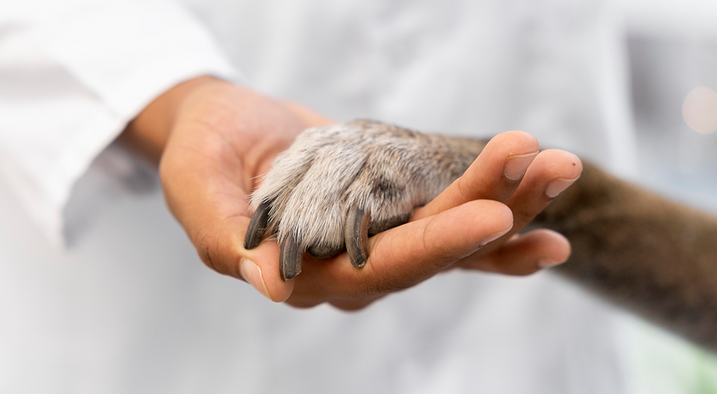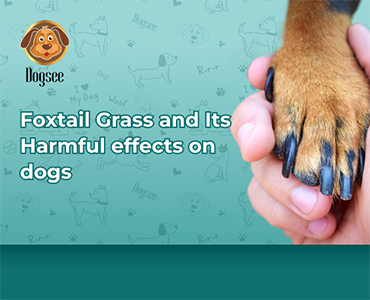
There are many reasons why our furry friends have issues related to their paws. Issues may be due to their environments or their diet. We know that paw pads insulate a dog's feet, give traction, assist with balance, slowing down, and stopping, and act as shock absorbers. Dog paws have various issues, despite the fact that they are sturdy and meant to handle a lot of exercises. It's important to inspect your dog's paws on a regular basis for any problems, be able to recognize when there's a problem, and take steps to maintain and keep them healthy and safe. A dog’s diet - the food and doggie treats they eat, can contribute majorly to their ‘paw-blems’. Below are 8 issues our furry friends may face:
8 Issues Our Furry Friends May Face
1. Cysts

It's difficult to determine the exact source of a tumour, growth, or cyst in an animal, just as it is with humans. Skin disorders in dogs, on the other hand, are assumed to be caused by the environment or an illness. Other types of tumours, growths, and cysts can also be influenced by genetics. Make sure your doggo remains calm, and ease their pain with delicious pet treats.
2. Paw Pads that are Cracked and Dry
The paw pads of pets are designed to be a little rough so that they can acquire traction on smooth surfaces. Red paws, Dry & cracked paw pads can be caused by a multitude of circumstances, including hot pavement, cold weather, chemicals, dry air, rough surfaces, and excessive licking. Dry, cracked paws are distressing for your pet and put them at risk of illness.
3. Abrasions and Cuts
Dogs run and play on a variety of terrains, so cuts, abrasions, and lacerations can happen at any moment. When walking your dogs, keep an eye out for dangerous items on the ground and make sure your dogs are properly protected when running on rough or uneven terrain or on the road. Foreign items such as small rocks, sticks, burrs, broken glass, and detritus can penetrate the skin when injuries occur. If your dog is in a lot of pain, help ease them by treating them to doggie treats.
4. Parasites

Pests are known for lurking between a pet's paws, where they can cause a variety of problems, including illness and suffering. It is better to get the tick removed by a veterinary medical specialist. If you can't get to the vet, grab the tick by the head with tweezers or professional tick removal equipment and gently take it out. Pets' paws may also be infested with mites, which can cause scaling, hair loss, and swelling. To detect and treat mites, your veterinarian will need to conduct tests.
5. Dog Paw Infections
Several distinct bacteria and fungi exist on your pet's paw pads, but these creatures can occasionally become aggressive and cause dog foot infection. In dogs, bacterial and fungal skin infections are widespread, and they frequently affect the paws. Itching, redness, and oily discharge are common in the area between the toes and other skin creases. Dog paw infections are curable if treated with care. Since they spend hours probably licking the infected area make sure you give them dog snacks and doggie treats that purifies their mouth and prevents any further spread.
6. Blisters and Burns
If it's a day that's too hot for you to take a walk barefoot outside, it's surely too hot for your dogs! Before letting your dog walk on the pavement, always feel it with the bottom of your naked palm. It's too hot for your dog's paws if you can't comfortably press your palm to the asphalt for 10 seconds or longer.
Unfortunately, pets may and do get burns on their paw pads when they step on overly hot surfaces. Swollen, red, or blistering paw pads are a few signs of burns. Burns to the paws are a significant medical problem that necessitates immediate medical attention from a veterinarian. Make sure you ease their pain by treating them with the best dog treats.
7. Problems with the Nails
Grown-out toenails: They Are common, and they can cause a variety of problems for your dog. It might make walking your dog more challenging. When a dog's toenails come into contact with hard ground, the hard surface forces the nail to back up into the nail bed, causing pain and putting strain on all of the dog's foot joints. Long nails also increase the risk of your dog developing a fractured or torn nail. Make sure your dog gets his intake of healthy proteins with the help of banana treats.
Ingrown Nails: Ingrown toenails can be unpleasant if they aren't cut properly or if they aren't naturally worn down by walking outside.
Torn Nails: When your dog's toenail snags on something, it tears or fractures. A common occurrence is when a dog comes in from outside, limping and often bleeding, and an injured nail is discovered upon closer investigation. Because torn and fractured nails are extremely painful and frequently bleed, they should be treated by a veterinarian. Torn nails can also be open to risk of dog foot infections.
8. Allergies
Pets, like humans, can be allergic to a variety of things. Allergy-prone pets will be itchy, especially in their paws, and will try biting, licking, or chewing on them to ease the irritation. The doggie treats you, rewards your dog, have a connection to your dog's allergies. Make sure you feed them the best crunchy treats. They are also more likely to develop persistent ear and dog paw infections, as well as problems with the anal glands. Excess licking can cause discomfort or harm to the paw, as well as it will render it more vulnerable to secondary fungal and bacterial infections. A veterinarian should examine pets who lick their paws excessively for allergies.
Also read: 5 Common Signs of Food Allergies In Dogs
Conclusion
Now that we know what are the pawsibilities of issues with dog paws. Let’s make sure we treat our little buddies with the best and most delicious Dog treats if they feel anxious from red paws and pains.
 HELPFUL0 people found it helpful
HELPFUL0 people found it helpful
Related Blogs
Subscribe to Our Blogs
and never miss on the latest update!



















